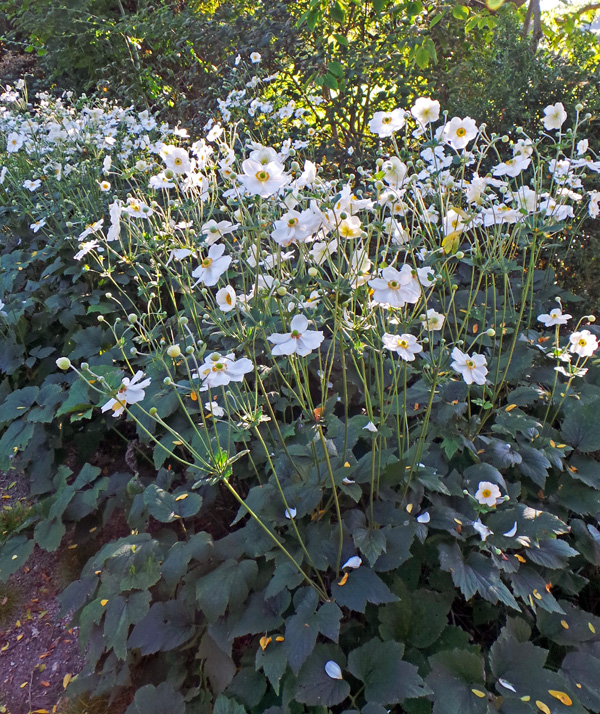
Anemone x hybrida, commonly called windflower, Japanese anemone, or thimbleflower, is a group of herbaceous perennials in the buttercup family (Ranunculaceae). They are all the result of crossing two or three species, A. hupehensis, A. vitifolium, and A. tomentosa, that actually are native to China but were erroneously called Japanese anemones because of an early record of one plant from Japan. The cultivar ‘Honorine Jobert’, an old garden hybrid discovered in Verdun, France in 1858, was selected as the Perennial Plant Association’s Perennial of the Year 2016. This hybrid, also called A. x hybrida ‘Alba’, was a sport of the pale pink Anemone x hybrida, a cross of A. hupehensis var. japonica and A. vitifolium which was raised at the Royal Horticultural Society’s garden at Chiswick. This cultivar, that adds late season interest in the garden, was award the RHS Award of Garden Merit in 1993. It was rated good (4 of 5 stars) in a plant evaluation study by the Chicago Botanic Garden and is hardy in zones 4-7.

This is a vigorous, low-maintenance plant, with a fibrous-rooted woody base that forms neat, dense, compact mounds of foliage that is nearly evergreen in mild climates. The glossy basal foliage only grows 12-18 inches tall, but when in bloom the plants are 3-4 feet tall. The palmate, toothed dark green basal leaves are lightly covered with fine hairs. It spreads by shallow creeping, wiry black rhizomes.
‘Honorine Jobert’ blooms over 5-8 weeks from late summer into early fall, with clusters of showy white flowers held well above the foliage on long, wiry stems. Flowers open from round, pink-washed buds on the gracefully erect, branching stems. Each 2-3” wide single to semi-double, open-faced flower has 6-9 brilliant white overlapping tepals and numerous bright yellow stamens in a ring surrounding a chartreuse center. There is a blush of pink on the back side of the tepals and the tips are slightly ruffled, giving the illusion of even more depth. Flowers may be visited by bees and butterflies and the inflorescences make good cut flowers. The flowers routinely bloom well past first frost are followed by rounded seed heads at the end of the stems, although they rarely produce seeds.

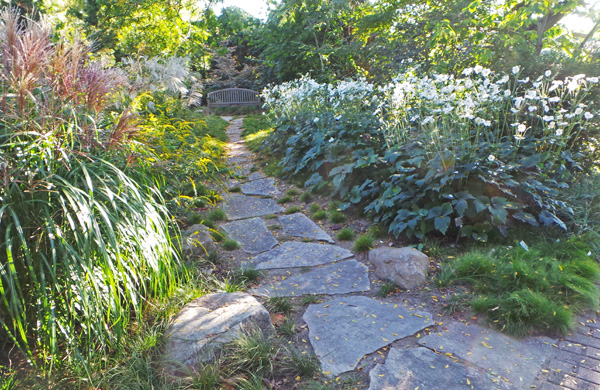
Use ‘Honorine Jobert’ as a specimen or in masses in cottage gardens, perennial borders, rock gardens, or open woodland gardens where their graceful flowers stems waving in the breeze above the dark green leaves can be appreciated. They can be planted at the front of a bed, as the mound of foliage is low, and the slender flower stems make it a see-through plant late in the season. This cultivar lights up the partly shaded garden, where the brilliant white flowers are easier to see out of the glare of direct sun. The white flowers will really stand out against a dark background, such as a yew hedge or painted wooden fence or wall.
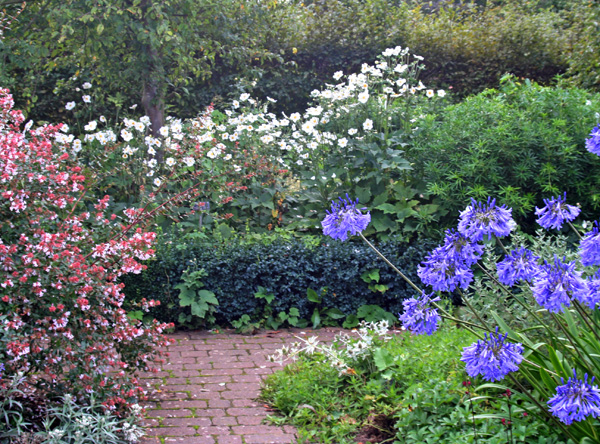
Combine fall-blooming Japanese anemone with spring bulbs and spring and summer blooming perennials to provide interest throughout the growing season, or pair it with fall-blooming asters, bugbane (Actaea (= Cimicifuga), chrysanthemums, eupatorium, goldenrod, monkshood (Aconitum), sedums, or toad lily (Tricyrtis) – depending on sites conditions – for a spectacular display late in the season. It pairs nicely with white-variegated hosta and ornamental grasses. Plant it near early-spring bloomers, such as bleeding heart (Dicentra spectabilis), where it will fill the void as the early bloomers begin to go dormant in late summer. Where it spreads vigorously, use it as a tall ground cover. It is a great addition to an all-white or moonlight garden, and can even be used in large containers.
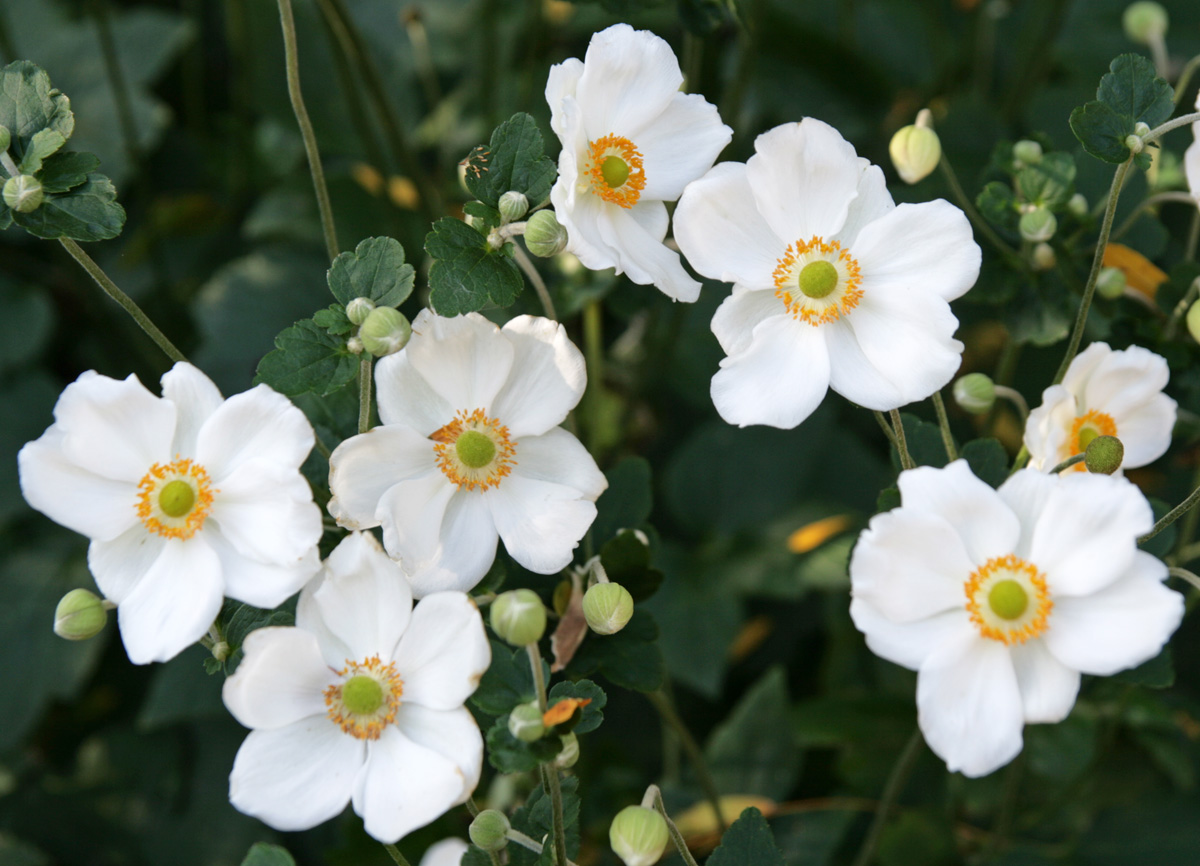
This cultivar of Japanese anemone grows best in full sun to part shade in evenly moist but well-drained soil rich in organic matter and can also thrive in clay soils. It does not tolerate dry soil, but also doesn’t like wet soils, especially in winter. Once established in ideal conditions (loose, organic soil) it can slowly spread aggressively, overrunning other perennials, so it is best suited to larger landscapes. Despite their tendency to spread, they are not considered invasive in the Upper Midwest. New plants that develop from the rhizomes on the edge of the colony as it encroaches on other areas are easily dug or pulled. Mulch the plants to keep the roots cool. The plants do not have any serious insect or disease problems, although slugs, blister beetles, and flea beetles may attack them, and are not favored by deer or rabbits. Contact with the sap may irritate the skin in some people.
This cultivar can be propagated by division in spring or root cuttings taken in late winter. It is late to emerge in spring and may be slow to establish (especially from the older, woody rootstock), but can eventually spread by rhizomes to form large colonies.
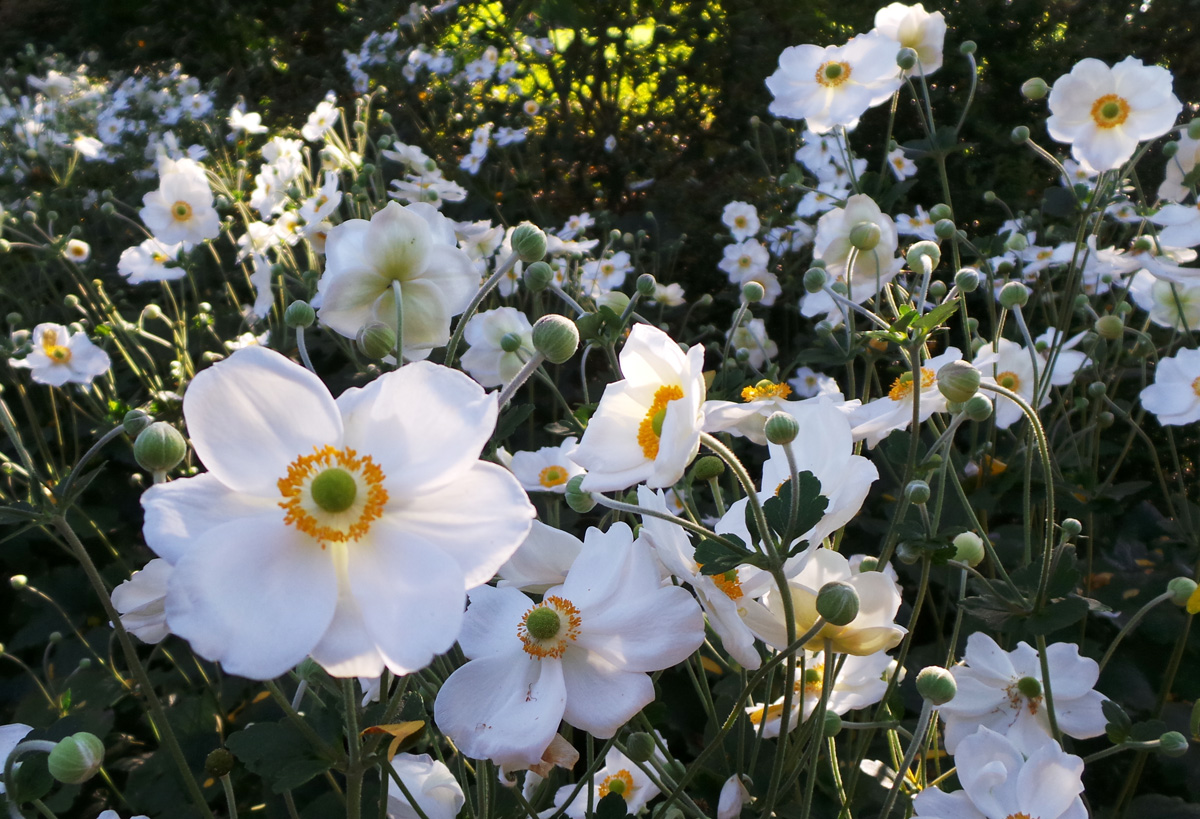
– Susan Mahr, University of Wisconsin – Madison
Latest from Wisconsin Yard & Garden
Ask Your Gardening Question
If you’re unable to find the information you need, please submit your gardening question here:





 Aster, Symphyotrichum spp.
Aster, Symphyotrichum spp. Fascinating Fasciation
Fascinating Fasciation Alternatives to Lawn: Groundcovers
Alternatives to Lawn: Groundcovers Marigolds
Marigolds


